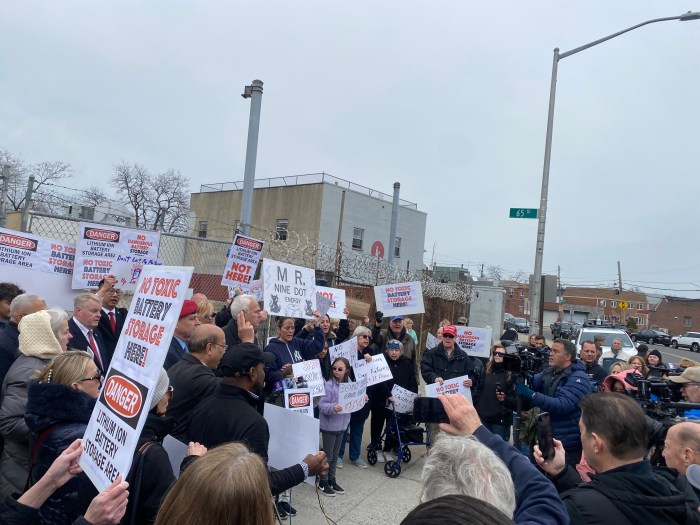
New York City’s urban jungle is ready to spring to life.
This is the time of year when scores of baby birds attempt their first flights, newborn squirrels venture out of their nests and baby opossums hang onto their mothers’ backs for dear life.
Animal lovers are being cautioned to watch from afar and resist the urge to scoop up baby wildlife, even if they are worried the creatures have been injured or abandoned.
“People think they are doing a good deed, but they are actually causing more harm,” said Rob Mastrianni, a sergeant with the city Parks Department’s Urban Park Rangers. “I have had people bring boxes to my office with baby squirrels and baby birds that were healthy.”
Mastrianni said people panic at the sight of a young bird hopping in the grass or a small squirrel under a tree. In most cases, the fledgling is still being fed by its parents, and the squirrel will be retrieved by its mother and brought back up to its nest.
Very often, those baby animals end up with licensed wildlife rehabilitators Cathy and Bobby Horvath who raise the creatures with the hopes of releasing them back into the wild.
“Wildlife across the board seems to be flourishing in New York City,” said Bobby Horvath, a New York City firefighter who, along with Cathy Horvath, is involved with Wildlife in Need of Rescue and Rehabilitation. He noted hawks, falcons, raccoons, skunks, opossums, deer and even coyotes are all part of our urban landscape — as well as squirrels and pigeons.
The couple receive lots of songbirds, such as sparrows and starlings, during the spring baby season — even though the animals are not sick or injured.
“For about two weeks, the parents feed them on the ground and teach them how to find their own food,” said Cathy Horvath. “Their wing feathers and tail feathers are still growing.”
“As dangerous as it seems, that’s part of the learning process,” Bobby Horvath added.
Mastrianni said he was called to Tompkins Square Park last summer by worried onlookers who spotted a young, red-tailed hawk jumping up and down.
“They use sticks and rocks to test their hunting skills,” Mastrianni said. “It’s very playful, but a lot of people mistake that for an injury.”
People also get concerned when they see hawks standing on one leg.
“Actually, when raptors are comfortable, they perch on one leg,” Mastrianni said.
In 2016, the city launched a public awareness campaign urging New Yorkers to enjoy the city’s abundant wildlife from a distance.
It was at least partially sparked by the booming deer population in Staten Island as well as highly publicized encounters with coyotes in parts of the city.
But interfering with wildlife can have tragic consequences.
A coyote family that made a home near LaGuardia Airport was euthanized nearly two years ago because the Port Authority of New York and New Jersey said they roamed too close to airport workers and a nearby Little League field. Experts said people who left food for the animals may have ended up putting them in peril.
Some animal lovers howled, saying the coyotes should be trapped and relocated. At the time, the state Department of Environmental Conservation said that was not possible.
Raccoons who are trapped face a similar fate. Since they cannot be relocated, they are euthanized. Even so-called humane trappers hired by property owners are not legally allowed to release raccoons.
That is why experts encourage people to keep their trash secured to discourage the furry masked bandits from looking for food on their property. If spotted, raccoons should be left alone, according to experts.
Baby rabbits are especially fragile and often nest in the middle of lawns, backyards and fields, Cathy Horvath said.
“Rabbits have nests in some of the most ridiculous places,” she said.
People can help by staying away from the hopping babies and keeping pet dogs and landscapers out of the backyard.
If a wild animal is injured, people should call 311. The Urban Park Rangers can assist if the animal is in a park. If not, the caller should ask for Animal Care Centers of NYC.
“Coexisting with wildlife means always keeping your distance and not interfering with their life cycle,” said Richard Simon, director of the city Parks Department’s Wildlife Unit. “If you spot a baby animal, leave it be, so its parents can return. They are likely waiting nearby to return to their young, but will not come back if people are hanging around. You can help by leaving them alone and keeping them wild.”



































